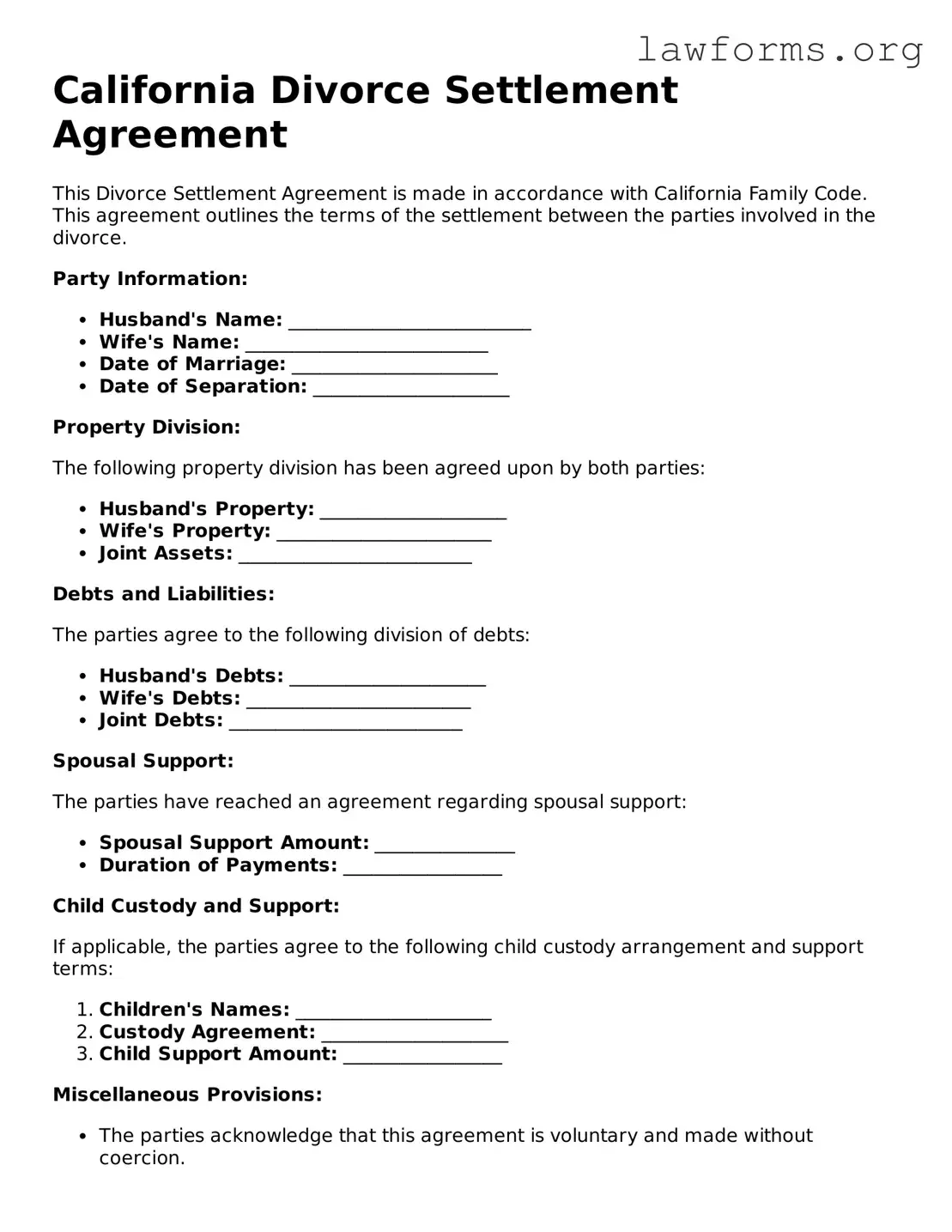California Divorce Settlement Agreement
This Divorce Settlement Agreement is made in accordance with California Family Code. This agreement outlines the terms of the settlement between the parties involved in the divorce.
Party Information:
- Husband's Name: __________________________
- Wife's Name: __________________________
- Date of Marriage: ______________________
- Date of Separation: _____________________
Property Division:
The following property division has been agreed upon by both parties:
- Husband's Property: ____________________
- Wife's Property: _______________________
- Joint Assets: _________________________
Debts and Liabilities:
The parties agree to the following division of debts:
- Husband's Debts: _____________________
- Wife's Debts: ________________________
- Joint Debts: _________________________
Spousal Support:
The parties have reached an agreement regarding spousal support:
- Spousal Support Amount: _______________
- Duration of Payments: _________________
Child Custody and Support:
If applicable, the parties agree to the following child custody arrangement and support terms:
- Children's Names: _____________________
- Custody Agreement: ____________________
- Child Support Amount: _________________
Miscellaneous Provisions:
- The parties acknowledge that this agreement is voluntary and made without coercion.
- This agreement may be modified only in writing and signed by both parties.
By signing below, both parties agree to the terms laid out in this Divorce Settlement Agreement:
- Husband's Signature: _______________________ Date: ______________
- Wife's Signature: _________________________ Date: ______________
